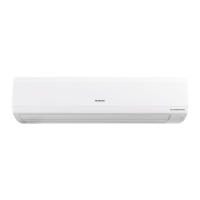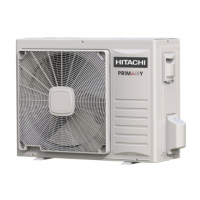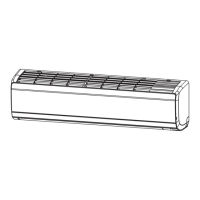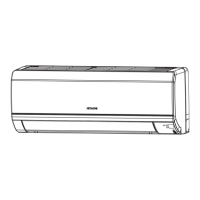2 Unit installation
RPI(M) - Ducted indoor unit (0.6-6.0)FSN4E(-DU)
SMGB0099 rev.0 - 12/2016
50
Once adjusted, tighten the suspension bracket nuts.
Apply a thread-locking product to the bolts and nuts to prevent them from loosening. Otherwise, abnormal noise may be
caused by mechanical vibrations and the indoor unit may become loose.
Apply protective paint to the bolts and nuts to prevent rusting.
Secure the drain hose with the clamp and adhesive supplied.
! CAUTION
Completely cover the unit with a sheet of plastic to protect it during installation work.
2.5.3 Air duct connection
? NOTE
• Use eld-supplied exible ducts to avoid abnormal acoustic vibrations.
• RPI units are supplied with a standard air lter on the suction side. This lter is supplied for cases where no suction duct is applied (or
when the duct is very short).
Secure the exible air duct to the outsides of the hoses supplied with the unit.
1 Inlet air
2 Outlet air
3 Standard air lter (factory-supplied)
4 Optional air lter (eld-supplied or adapted factory-
supplied one)
5 Insulated duct (installed on the outer side of the
anges)
6 Flexible duct installation (rubber or textil material)
Bear in mind the following instructions depending on the installation type:
1 Where the suction duct is not used, keep the standard air lter.
2 Where the suction duct is used, t the air lter at the suction duct inlet point, removing the standard air lter from the
unit. This air lter must be eld-supplied or a factory-adapted one must be used.
3 In the case of the RPIM unit, low static pressure is produced in the suction duct and, therefore, a short duct must be
used.

